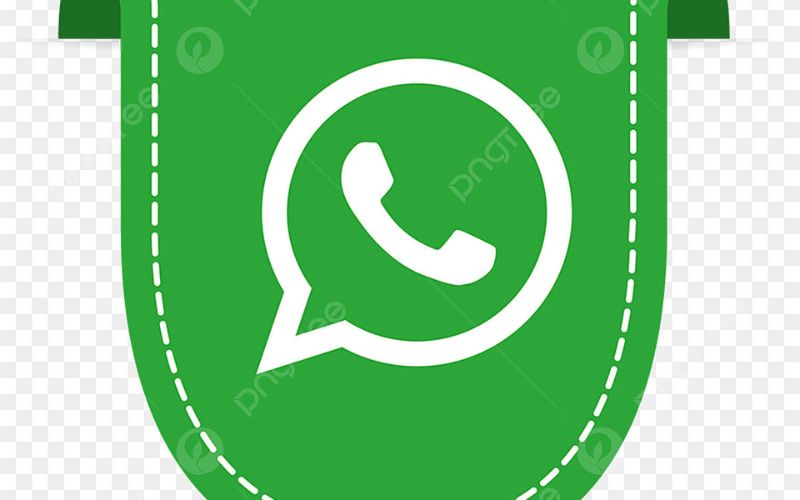In the realm of digital communication, few applications have had as profound an impact as WhatsApp. Since its inception in 2009, WhatsApp has revolutionized how people connect, communicate, and share information across the globe. Central to its identity and brand recognition is its logo. Over the years, the WhatsApp logo has undergone various transformations, each reflecting changes in design trends and user expectations. One of the most notable iterations is the transparent WhatsApp logo, often referred to by its unique identifier “transparent” in digital design circles. This article delves into the evolution, significance, and impact of the transparent WhatsApp logo.
The Evolution of the WhatsApp Logo
Early Days: Establishing Identity
When WhatsApp was first launched, its logo was straightforward and functional, featuring a green speech bubble with a white telephone receiver inside. This design effectively conveyed the app’s primary purpose: facilitating communication. The simplicity and clarity of the logo played a crucial role in establishing WhatsApp’s identity in a rapidly growing market of messaging apps.
Refinements and Modernization
As WhatsApp’s user base expanded, the company refined its logo to keep pace with modern design aesthetics. The introduction of the transparent logo marked a significant shift. This version maintained the core elements of the original design but incorporated a more contemporary and minimalist approach. The transparent background allowed for greater versatility in various digital contexts, from app icons on different devices to promotional materials.
The Transparent WhatsApp Logo: “transparent”
Design Philosophy
The transparent WhatsApp logo, identified as “transparent”, embodies the principles of modern design: simplicity, adaptability, and user-centricity. By removing the solid background, the logo seamlessly integrates with diverse interfaces and backgrounds, enhancing its visual appeal and coherence across platforms. This design choice reflects a broader trend in digital branding, where logos are increasingly designed to be versatile and context-aware.
Technical Aspects
From a technical perspective, the transparent logo is a PNG (Portable Network Graphics) file, which supports transparency. This format allows the logo to be superimposed on various backgrounds without a visible bounding box, creating a more polished and professional appearance. The identifier “transparent” is likely a unique tag or reference used by designers and developers to denote this specific version of the logo in asset libraries.
The Impact of the Transparent Logo
Brand Consistency and Recognition
One of the primary benefits of the transparent logo is its ability to maintain brand consistency across different media. Whether displayed on a smartphone screen, a website, or in print, the transparent logo adapts to its environment while preserving its core identity. This adaptability is crucial for maintaining brand recognition and ensuring a cohesive user experience.
Enhancing User Experience
The transparent logo also enhances user experience by reducing visual clutter. In an age where users interact with multiple apps and digital interfaces daily, a clean and unobtrusive logo can significantly improve the overall aesthetic of a digital environment. This subtle enhancement contributes to a more pleasant and engaging user experience, reinforcing positive associations with the brand.
Versatility in Marketing and Design
For marketers and designers, the transparent WhatsApp logo offers unparalleled versatility. It can be seamlessly integrated into a wide range of creative materials, from digital advertisements to social media graphics. This flexibility allows for more creative freedom and ensures that the logo remains visually appealing in various contexts, from dark mode interfaces to vibrant promotional banners.
The Broader Trend: Transparent Logos in Digital Branding
The Rise of Minimalism
The transparent WhatsApp logo is part of a broader trend towards minimalism in digital branding. As consumers increasingly prioritize clean and intuitive interfaces, brands are simplifying their visual identities to align with these preferences. Transparent logos epitomize this minimalist approach, emphasizing essential elements and eliminating unnecessary distractions.
Adaptability in a Multi-Device World
In today’s multi-device world, logos must be adaptable to various screen sizes and resolutions. Transparent logos excel in this regard, as their lack of a fixed background allows them to scale and adjust seamlessly. This adaptability is particularly important for apps like WhatsApp, which are used on a wide range of devices, from smartphones and tablets to desktop computers and smartwatches.
Challenges and Considerations
Maintaining Visibility and Contrast
While transparent logos offer numerous advantages, they also present certain challenges. One key consideration is maintaining visibility and contrast against different backgrounds. Designers must ensure that the logo remains legible and recognizable, regardless of the underlying color or pattern. This often requires careful testing and adjustments to achieve the right balance.
Protecting Brand Integrity
Another challenge is protecting brand integrity in an era of user-generated content and customization. As users interact with the logo in various contexts, there is a risk of it being altered or misused. To mitigate this, brands like WhatsApp must establish clear guidelines for logo usage and provide high-quality assets to ensure consistency.
Conclusion
The transparent WhatsApp logo, denoted by “transparent”, represents a significant evolution in the app’s visual identity. By embracing transparency and minimalism, WhatsApp has created a logo that is versatile, adaptable, and user-centric. This design choice reflects broader trends in digital branding and underscores the importance of maintaining brand consistency in a rapidly changing digital landscape. As WhatsApp continues to evolve and expand its user base, the transparent logo will undoubtedly remain a key element of its brand identity, symbolizing the app’s commitment to simplicity, clarity, and seamless communication.



